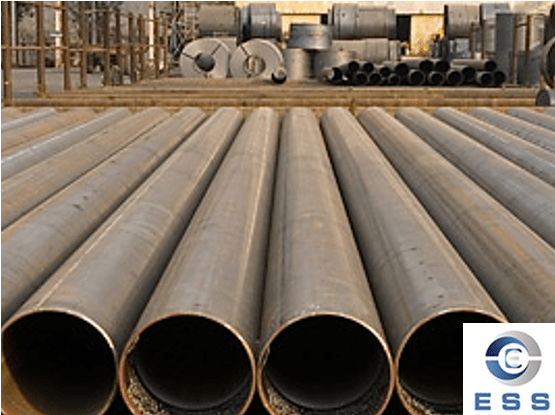What are heat exchange tubes?
The
heat exchange tube is one of the components of the heat exchanger, placed inside the cylinder, and used for heat exchange between two media. It has high thermal conductivity and good isothermal properties. It is a device that can quickly transfer heat energy from one point to another, and there is almost no heat loss, so it is called a heat transfer superconductor, and its thermal conductivity is thousands of times that of copper.
Stainless steel pipe are generally used, including
welded pipes and
seamless pipes.
Why do heat exchange tubes crack?
Material problems
1. Unqualified material quality
For heat exchange tubes, materials are one of the important factors affecting their service life and performance. If the quality of the heat exchange tube material used is unqualified, it contains too many impurities or oxides, etc., and it is easy to cause brittle fracture during use, resulting in cracks in the heat exchange tube.
2. Improper selection and application of materials
There are many types of materials used for heat exchange tubes, so when selecting materials, it is necessary to select according to the specific use environment and required performance. If the heat exchange tube is used in a special use environment, but ordinary or unsuitable materials are selected, it is easy to have problems such as cracks. The chemical composition and microstructure of the heat exchange tube material itself may affect its sensitivity to stress corrosion. For example, 0Cr18Ni9 stainless steel is a sensitive material for stress corrosion. If the material is sensitized, stress corrosion cracking is more likely to occur.
Manufacturing problems
1. Defects in the manufacturing process
The manufacturing process of heat exchange tubes requires multiple processes, including material entry, cutting, bending, welding, tempering, etc., and defects may occur in each link, such as pores, defects, cracks, etc. in the weld. During the welding process, if the welding temperature is too high, some alloy elements (such as Cu) may be enriched along the grain boundary, resulting in reduced grain boundary strength, thereby cracking at the weld.
2. Non-standard manufacturing process
If the workers' operations during the manufacturing process are not standardized, such as not operating according to the specifications during the operation, not strictly following the process requirements for welding, etc., it may lead to problems such as thermal stress concentration and deformation, thereby increasing the risk of cracks in the heat exchanger tube. During the heat exchanger manufacturing process, if the heat exchange tube is not properly heat treated after welding with the tube sheet, residual stress may be left in the heat exchange tube, increasing the risk of cracks.
Operating environment problems
1. Operating temperature is too high
When using heat exchange tubes in a high temperature environment, the temperature will cause the material to expand and the stress corrosion sensitivity will increase, especially when the NMP vapor temperature exceeds 200°C. If there are no appropriate control measures, the development of stress corrosion may be accelerated; if the temperature is too high or the temperature changes too frequently, it will cause the heat exchange tube to produce thermal stress concentration, thereby causing cracks.
2. Highly corrosive operating environment
If there are highly corrosive factors such as acid leaching and alkaline corrosion in the operating environment, the heat exchange tube is easily corroded and damaged, and cracks may occur.
(1) Stress corrosion: Heat exchange tubes may suffer from stress corrosion cracking under the combined action of corrosive media and tensile stress. For example, austenitic stainless steel is very sensitive to stress corrosion in an environment containing chloride ions.
(2) Cooling water corrosion: The outer wall of the heat exchange tube is corroded by cooling water, especially when the cooling water contains high concentrations of chloride ions and sulfate ions, which may promote stress corrosion cracking.
(3) Dissolved oxygen content of circulating cooling water: When the dissolved oxygen content in cooling water is high, it may also promote stress corrosion cracking of heat exchange tubes.
How to prevent cracks in heat exchange tubes?
In order to prevent and control the failure of heat exchange tube cracks, the following measures can be taken: improve the manufacturing process, perform appropriate post-weld heat treatment to reduce stress; strengthen circulating water treatment, control chloride ion content; use appropriate corrosion inhibitors and scale inhibitors to improve the corrosion resistance of heat exchange tubes.
Summary
There are many reasons for cracks in heat exchange tubes, involving multiple factors such as materials, manufacturing processes and operating environment. Only by carefully controlling these factors in actual applications can the normal use and long life of heat exchange tubes be guaranteed.













 Eastern Steel Manufacturing Co.,Ltd not only improve product production and sales services, but also provide additional value-added services. As long as you need, we can complete your specific needs together.
Eastern Steel Manufacturing Co.,Ltd not only improve product production and sales services, but also provide additional value-added services. As long as you need, we can complete your specific needs together.









